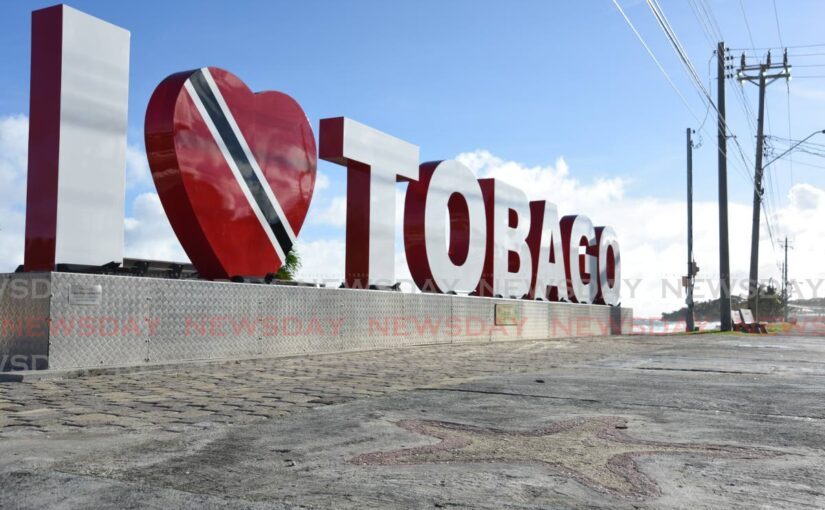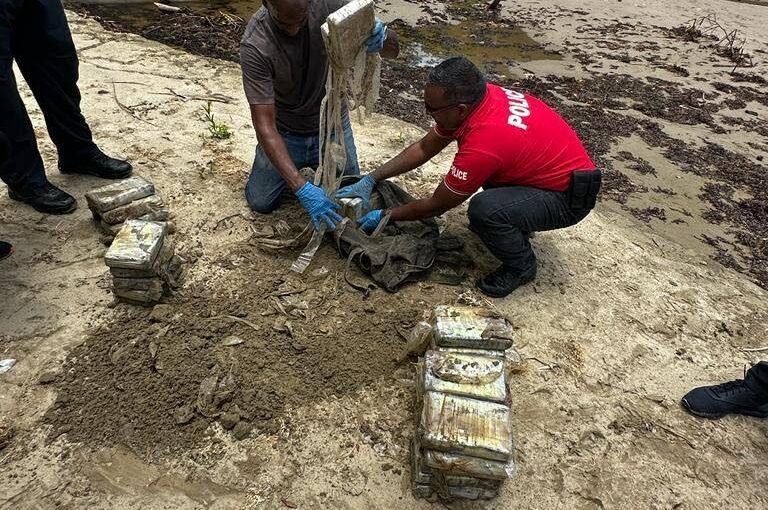Dr Rita Pemberton THE YEAR 1876 was an important year for Tobago because of two significant events within weeks of each other which had implications...
Vous n'êtes pas connecté
- English
- Français
- عربي
- Español
- Deutsch
- Português
- русский язык
- Català
- Italiano
- Nederlands, Vlaams
- Norsk
- فارسی
- বাংলা
- اردو
- Azərbaycan dili
- Bahasa Indonesia
- Հայերեն
- Ελληνικά
- Bosanski jezik
- українська мова
- Íslenska
- Türkmen, Түркмен
- Türkçe
- Shqip
- Eesti keel
- magyar
- Қазақ тілі
- Kalaallisut ; kalaallit oqaasii
- Lietuvių kalba
- Latviešu valoda
- македонски јазик
- Монгол
- Bahasa Melayu ; بهاس ملايو
- ဗမာစာ
- Slovenščina
- тоҷикӣ ; toğikī ; تاجیکی
- ไทย
- O'zbek ; Ўзбек ; أۇزبېك
- Tiếng Việt
- ភាសាខ្មែរ
- རྫོང་ཁ
- Soomaaliga ; af Soomaali
Rubriques :
 Maroc - NEWSDAY.CO.TT - A la Une - 05/Sep 06:23
Maroc - NEWSDAY.CO.TT - A la Une - 05/Sep 06:23
Producers, protesters and protectors: Labouring class in post-Emancipation Tobago
Dr Rita Pemberton THE LABOURING class was the largest social group in post-Emancipation Tobago. This class was formed from the enslaved African population, which was freed in 1838, and which occupied the lowest rank on the island’s social scale. The labouring class included those people who were engaged in all the lowly paid occupations on the island: fishermen, boatmen, artisans, such as shoemakers who built and repaired shoes, porters who worked in and around Scarborough and Plymouth, domestic servants who worked in the homes of the upper classes, laundresses who washed and ironed clothes for the well-to-do, labourers who worked on the road or on estates, hucksters who bought and sold locally produced items within their communities and in overseas trade, small vendors and small traders who sold household and other essential items, some of which were purchased from vendors who came to Tobago, and the group of metayers whose labour kept Tobago’s sugar production system operational until its demise in 1884. The numbers of this group declined across the second half of the 19th century, particularly during the closing years. Wages in Tobago were extremely low and there was a chronic shortage of coinage, which led members of the labouring class having to find ways to increase their incomes. This move was also spawned by their desire to remove themselves and their families from the stigma of “labourer,” which was associated with the lowest rung of the island’s social ladder, and seek a better life, which involved engaging in higher earning forms of employment. Some migrated from the rural areas to the western side of the island where there were more employment options, others aligned themselves with the skilled, and others made use of educational opportunities, particularly those that existed through the churches as teachers and preachers, which guaranteed elevation to the respectable classes. The fact that membership of this group declined during the second half of the 19th century did not reduce the importance of the role played by labourers. In fact, the labourers of Tobago have been described as “the backbone of agriculture and fishing,” The most visible contribution of the labouring class to the island occurred in agriculture. This service was provided by the metayers and labourers who were responsible for the operations of the sugar industry, particularly for planting, weeding and reaping cane. In addition, these were the island’s food producers. As metayers, they were paid for their labour in kind, with access to garden plots on estate land which they cultivated with ground provisions and other food crops. Since it was common for the labourers to establish metayage agreements with several plantations and/or several arrangements with the same plantation owner, some gained access to significant portions of land on which they established food gardens, the produce of which was used to support their families and to barter with other service providers for essential items. As a result, Tobago became self-sufficient in food and produced a surplus for export. This was important because the supply of imported food items was reduced as fewer trading ships called on the island with the decline of the sugar industry. The pattern of local food production became stamped on Tobago, which in the first half of the 20h century became known as the “food basket” of Trinidad. Some small landholders in the north of the island also produced sugar, coconut and cotton, along with ground provisions, chickens and eggs, and farine, which were exported to Trinidad and other Caribbean territories through Plymouth, without official knowledge. In an island environment, fishing was an important activity, both as a food staple, which was an important part of the diet of Tobagonians, and as employment, and also generating local processing. Fish was dried, corned or fried and sold across the island, usually by women. Fishermen also employed assistants to “pull seine” and to repair it after the catch. The fishing industry had its own unique manner of communication for the conch shell blowers signalled to the public that a boat with fresh fish had landed and specific blowing styles indicated the species which made up the day's catch. The members of the labouring class did not accept their social position without question. They engaged in several forms of resistance across the second half of the 19th century. They were participants in all the protests of the era against the heavy taxes, which were imposed by the authorities on their homes, dogs, horses, boats and land, all of which were intended to control the workers by preventing them from engaging in activities that would make them independent of the estates. They complained about injustice in the society, the high prices they were charged to obtain the services of paid officials such as doctors, who charged for conducting inquests, and magistrates, who charged large fees to receive complaints. They complained, too, about the poor state of roads and the absence of roads in some areas, and the lack of public institutions to provide services for the poor, the aged and the sick. They made strong complaints about the arbitrariness of the metayage system and the deliberate attempts of plantation owners to defraud their workers, the common practice of wage payment delinquency by planters, for which the workers had no recourse, and their continued oppression by the white population, which constituted the island’s ruling class. It was no surprise that the members of the labouring class were active participants in the Belmanna war of 1876. The members of the labouring class served as protectors of the culture of the masses. They made use of the sou-sou, an African saving mechanism through which individuals were able to raise money to make purchases which they could not afford on their own. They maintained the traditions of African child-rearing with the use of proverbs and funerary; wedding and dance traditions were also maintained. While the members of the upper and respectable classes and the churches frowned on the practices which were of African origin and were described as pagan, vulgar and undesirable, or banned outright, the schools taught the “queen's English” at the expense of the Tobago language, which was dismissed as “bad English.” The folk songs gave expression to the protests of the labouring class against the ills of the society in their own language, which the planters did not understand. It was the labouring class whose members dared to defy the churches and the law, and organised and participated in cultural activities in the yards where the music of the Tobago-created tambrin bands entertained those gathered, who served as the keepers of the traditions which have become recognised as the island’s cultural heritage. As food cultivators, protesters against exploitation and defenders of the island’s culture, the members labouring class were key contributors to the maintenance of the traditions of Tobago. The post Producers, protesters and protectors: Labouring class in post-Emancipation Tobago appeared first on Trinidad and Tobago Newsday.
Articles similaires
What’s in store for Store Bay?
THE question on everyone’s lips is what’s in store for one of the most beautiful beaches in Tobago. The Tobago House of Assembly intends to turn...
Rodney Charles: UNC playing ‘school games’
NAPARIMA MP Rodney Charles says "school games" are being played in the opposition UNC. He was commenting on the party's attitude towards members who...
I Love Tobago sign to be relocated
THE I Love Tobago gateway sign on Milford Road, Scarborough, is expected to be moved to the esplanade, in the heart of the capital city, by the end...
Blackest Friday – Cunupia man loses wife, mother, home to fire on his birthday
IT was the blackest of Fridays for a Cunupia family as a fire claimed the lives of Angela Ali, 53, and her daughter-in-law Ambika Carerra-Ali, 30 on...
Blackest Friday – Cunupia man loses wife, mother, home to fire on his birthday
IT was the blackest of Fridays for a Cunupia family as a fire claimed the lives of Angela Ali, 53, and her daughter-in-law Ambika Carerra-Ali, 30 on...
WASA: ‘Water in Parlatuvier and environs safe’
THE morning after a woman and two of her children were found dead in a Water and Sewerage Authority (WASA) water tank in Tobago, WASA and the...
Storms brewing over Store Bay Beach Facility
STORMS are brewing over Store Bay as stakeholders and politicians express serious concerns over redevelopment plans by the Tobago House of Assembly...
‘Family man’ Alvin Daniel killed in Parlatuvier
A TOBAGO man was shot and killed near a guesthouse in Parlatuvier on September 11, raising the island’s record murder toll to 22 for 2024 Police...
UN report: Venezuelan gangs muscling in on Trinidad and Tobago crime
VENEZUELAN criminal gangs are participating in serious crime in Trinidad and Tobago, both in competition and collaboration with local gangs, said a...
Les derniers communiqués
-
Aucun élément









